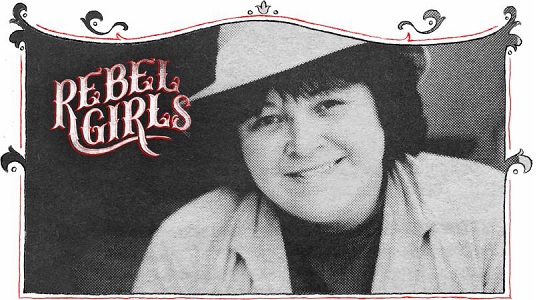Do you know who is Barbara May Cameron? In a world often dominated by mainstream narratives, it’s essential to celebrate the lives and contributions of individuals who have dedicated themselves to making the world a more inclusive place. Barbara May Cameron, a Native American activist and a prominent figure in the LGBTQ+ community, is one such remarkable individual. Her impact on human rights activism, particularly within Native American and LGBTQ+ communities, is significant. In this article, we’ll delve into the life and achievements of Barbara May Cameron and explore why her story is worth knowing.

The Life and Legacy of Barbara May Cameron
Barbara May Cameron, a Native American photographer and human rights activist, was born in Fort Yates, North Dakota. Her journey as an activist began at a time when the voices of marginalized communities were often silenced. Cameron was a member of the Hunkpapa Lakota tribe, and her heritage profoundly influenced her work and commitment to social justice.
One of the noteworthy aspects of Barbara May Cameron’s life is her advocacy for the rights of Native American and LGBTQ+ individuals. She co-founded Gay American Indians and played a pivotal role in organizing the Lesbian Gay Freedom Day Parade and Celebration in San Francisco. Her tireless efforts extended to fighting for the rights of Native people, particularly those living on the Standing Rock Reservation.
Why is Barbara May Cameron being honoured with a Google Doodle?
Cameron’s influence reached far beyond her immediate community. She worked with organizations like the American Indian AIDS Institute and the San Francisco AIDS Foundation, contributing to the fight against HIV/AIDS in Native American communities. Her dedication and impact in these fields made her a respected figure in the realm of public health.
Additionally, Barbara was an artist who studied photography and film at the American Indian Art Institute in Santa Fe. Her creative endeavours allowed her to blend her activism with her passion for artistic expression, leaving behind a body of work that continues to inspire and educate.
Tragically, Cameron passed away in 2002. However, her legacy endures through the countless lives she touched and the changes she affected during her lifetime. Her story is a testament to the power of an individual’s dedication to making the world a better place for those who have been historically marginalized and underserved.
Exploring Barbara May Cameron’s 69th Birthday Celebration
Barbara May Cameron’s 69th birthday would have been a momentous occasion. To honor her memory and her impact on Native American, LGBTQ+, and public health communities, Google Doodle featured her on its homepage on what would have been her 69th birthday. This recognition by Google is a testament to her enduring legacy and the importance of her contributions.
Uncovering Her Life and Work of Activist Barbara
To fully appreciate the significance of Barbara May Cameron’s life and activism, it’s crucial to delve deeper into her story. Let’s explore her life and work through a series of critical subheadings.
1. Who Was Barbara May Cameron?
She was born in Fort Yates, North Dakota, in May 1954. As a member of the Hunkpapa Lakota tribe, her Native American heritage played a significant role in shaping her identity and activism. She was a photographer, filmmaker, and a passionate advocate for human rights.
2. Barbara May Cameron’s Activism
Barbara May Cameron’s activism spanned multiple areas. She co-founded Gay American Indians and was instrumental in organizing the Lesbian Gay Freedom Day Parade and Celebration in San Francisco. Her work was not limited to LGBTQ+ rights; she also worked tirelessly for the rights of Native Americans.
3. Contributions to Public Health
Cameron’s dedication extended to the field of public health, where she worked with organizations like the American Indian AIDS Institute and the San Francisco AIDS Foundation. Her contributions in this area profoundly impacted addressing the HIV/AIDS crisis within Native American communities.
4. Artistic Expression
In addition to her activism, Barbara was an artist who studied photography and film at the American Indian Art Institute in Santa Fe. Her creative pursuits allowed her to blend her activism with her passion for art, leaving behind a legacy of thought-provoking work.
5. Google Doodle Tribute
On her 69th birthday, Google Doodle paid tribute to Barbara by featuring her on its homepage. This recognition highlighted the significance of her life and contributions, bringing her story to a global audience.
6. Legacy and Impact
Barbara May Cameron’s legacy continues to inspire individuals and communities worldwide. Her dedication to social justice, Native American rights, LGBTQ+ rights, and public health has left an indelible mark on the world. Her story serves as a reminder of the power of one person’s commitment to effecting positive change.
7. Remembering Barbara May Cameron
As we reflect on the life and work of Barbara May Cameron, it’s essential to remember the lessons she imparted through her activism and art. Her story reminds us that individuals like Barbara have courageously raised their voices and effected change for much longer than we might realize.
8. Honoring Her Legacy
To honour Barbara May Cameron’s legacy, we can continue her work by standing up for the lives she dedicated to. Her impact on Native American and LGBTQ+ communities and public health should inspire us to take action and advocate for a more inclusive and just world.
9. A Catalyst for Change
Barbara May Cameron’s life and work are a testament to the power of one person to be a catalyst for change. Her advocacy and activism exemplify how individuals can make a lasting impact on society by championing the rights and well-being of marginalized communities.
10. Celebrating Diversity
The story of Barbara May Cameron reminds us of the importance of celebrating diversity and recognizing the contributions of individuals from all walks of life. Her life was a journey of intersectionality, bridging the worlds of Native American heritage, LGBTQ+ advocacy, and public health.
See Also What is Preply App? Exploring the World of Online Learning
Final Thoughts:
Barbara May Cameron’s life and legacy are a source of inspiration and a testament to the transformative power of activism and advocacy. Her unwavering commitment to Native American rights, LGBTQ+ rights, and public health continues to impact communities nationwide.
As we remember Activist Barbara, let us carry forward her message of inclusion, equality, and justice. Let her story be a reminder that every individual has the potential to effect change and leave a lasting legacy. In a world where the voices of marginalized communities still need to be amplified, Her’s story is both a beacon of hope and a call to action.
FAQs:
1. What happened to Barbara May Cameron?
Barbara May Cameron, a Native American activist, photographer, and human rights advocate, passed away in 2002. Her life was marked by her dedication to various causes, including LGBTQ+ rights, Native American rights, and public health. Despite her untimely death, her legacy and impact continue to resonate in the communities she served and beyond.
2. What is Barbara May Cameron known for?
She is known for her multifaceted contributions to social justice and advocacy. She is renowned for her activism, particularly in co-founding Gay American Indians and organizing the Lesbian Gay Freedom Day Parade and Celebration in San Francisco. Her work extended to championing the rights of Native Americans and her involvement in addressing the HIV/AIDS crisis within these communities. Barbara May Cameron is also recognized for her artistic pursuits in photography and film, leaving behind a significant body of work that continues to inspire.
3. What did Barbara Cameron do?
Her’s life was characterized by her tireless efforts to effect positive change. She was deeply involved in activism, notably co-founding Gay American Indians and organizing LGBTQ+ events such as the Lesbian Gay Freedom Day Parade and Celebration. Additionally, Cameron worked diligently in the field of public health, collaborating with organizations like the American Indian AIDS Institute and the San Francisco AIDS Foundation to address the HIV/AIDS crisis within Native American communities. Her artistic endeavors in photography and film also testify to her creative and expressive side.
4. Is Barbara May Cameron married?
Information regarding Barbara May Cameron’s marital status is not widely available. Her life and legacy are primarily associated with her activism, advocacy, and artistic contributions. While her personal life may not be extensively documented, her impact on the causes she championed is well-documented and celebrated.


